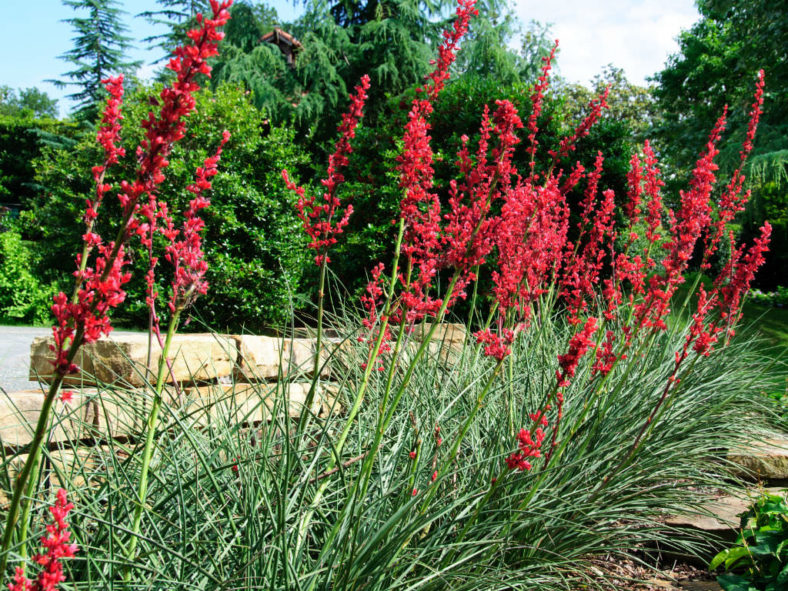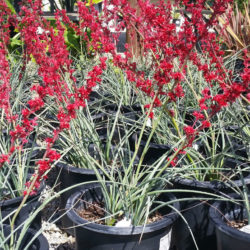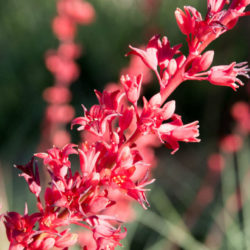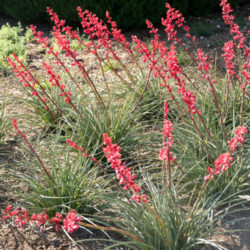Scientific Name
Hesperaloe parviflora 'Brakelights'
Common Name(s)
Red Yucca
Synonym(s)
Hesperaloe parviflora 'Perpa'
Scientific Classification
Family: Asparagaceae
Subfamily: Agavoideae
Genus: Hesperaloe
Description
Hesperaloe parviflora 'Brakelights' is a stemless succulent with grass-like, gracefully arching leaves arranged in a basal rosette. It can grow 24 inches (60 cm) tall. The leaves are olive-green to blue-green and sometimes turn slightly purple with winter temperatures. They have deep grooves and white fraying fibers along the margins.
Tall spikes of bell-shaped, showy red flowers rise above the foliage from the center of the rosettes in spring and summer, with intermittent blooming throughout the year in milder climates.
This cultivar is smaller than the species, has much darker red flowers, and continues to flower over a longer period.
Origin
Hesperaloe parviflora 'Brakelights' was selected by Ron Gass in 2006 as a unique plant amongst seedlings from a self-pollinated selection of Hesperaloe parviflora in a controlled breeding program in 2002 at the Mountain States Wholesale Nursery in Litchfield Park, Arizona, United States. It was patented (PP21729) under the cultivar name Hesperaloe parviflora 'Perpa' in February 2011.

Hardiness
USDA hardiness zone 5a to 10b: from −20 °F (−28.9 °C) to 40 °F (+4.4 °C).
How to Grow and Care
Plant Red Yucca in full sun in well-drained soil, preferably a bit sandy. To establish a deep and extensive root system, follow a regular watering schedule during its first growing season. Feed with a general-purpose fertilizer in the spring before the new growth starts. Although established plants can get by on little water, for better-looking blooms, give them a deep soaking about once every two weeks during the summer heat.
Sometimes, xeriscape gardeners avoid cacti and Yuccas, thinking of them as cliches. Still, the striking blooms and unusual foliage of the Red Yucca have won over xeriscape enthusiasts from California to Texas to Florida. The desert native is also in a rock garden, planted among dry streambeds and landscape boulders. A surprising addition to a cottage garden or border can contribute color and textural interest if placed with other water-wise perennials.
Links
- Back to genus Hesperaloe
- Succupedia: Browse succulents by Scientific Name, Common Name, Genus, Family, USDA Hardiness Zone, Origin, or cacti by Genus
Photo Gallery
Click on a photo to see a larger version.


